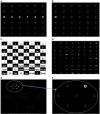P300 brain computer interface: current challenges and emerging trends
- PMID: 22822397
- PMCID: PMC3398470
- DOI: 10.3389/fneng.2012.00014
P300 brain computer interface: current challenges and emerging trends
Abstract
A brain-computer interface (BCI) enables communication without movement based on brain signals measured with electroencephalography (EEG). BCIs usually rely on one of three types of signals: the P300 and other components of the event-related potential (ERP), steady state visual evoked potential (SSVEP), or event related desynchronization (ERD). Although P300 BCIs were introduced over twenty years ago, the past few years have seen a strong increase in P300 BCI research. This closed-loop BCI approach relies on the P300 and other components of the ERP, based on an oddball paradigm presented to the subject. In this paper, we overview the current status of P300 BCI technology, and then discuss new directions: paradigms for eliciting P300s; signal processing methods; applications; and hybrid BCIs. We conclude that P300 BCIs are quite promising, as several emerging directions have not yet been fully explored and could lead to improvements in bit rate, reliability, usability, and flexibility.
Keywords: P300; brain computer interface; event-related potential.
Figures







References
-
- Allison B. Z. (2009). The I of BCIs: next generation interfaces for brain-computer interface systems that adapt to individual users, in Hum. Comput. Interact. Novel Interact. Methods Tech. Lecture Notes in Computer Science, 5611, (Heidelberg: Springer; ), 558–568
LinkOut - more resources
Full Text Sources
Other Literature Sources
Miscellaneous

